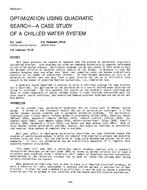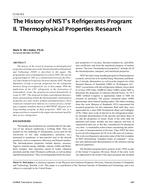Snow melting systems which use heating from pipes or electrical cables embedded in the pavement surface are being used in many parts of the United States. (1) As the size of these systems increases, economic optimization becomes increasingly important. Since snowfall is occurring less than 10% of the time in most U.S. cities, (2) operation of the system is intermittent. Therefore, both transient and steady state operation must be considered in the system design. The first important contribution to the steady state analysis of snow melting systems was made by Chapman. (3) He presented equations which can be used to calculate the required heat flux for specified weather conditions, assuming the spacing between the pipes or cables is relatively small. A more recent steady state analysis by Schnurr and Rogers4 also included the effects of pipe spacing, depth, and diameter on the required heat flux and pipe surface temperature.
No comparable results are presently available for the transient case. The purpose of this paper is to provide an analysis of the transient operation of a snow melting system which may be used to predict the required operating conditions for specified weather conditions, system geometry, pavement thermal properties, and lead time.
Citation: ASHRAE Transactions, Volume 79, Part 2, Louisville, KY
Product Details
- Published:
- 1973
- Number of Pages:
- 8
- File Size:
- 1 file , 670 KB
- Product Code(s):
- D-LO-2291


